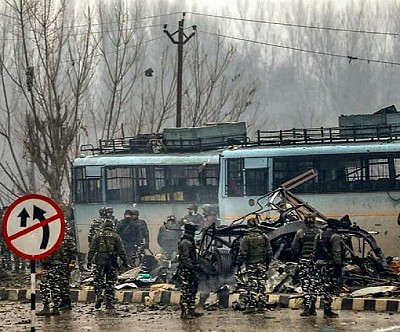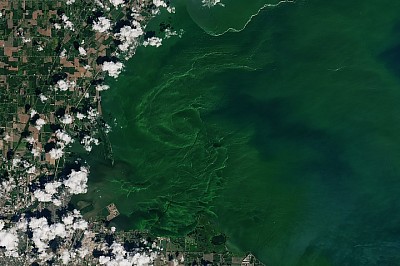Here's unknown & Amazing facts about the world .
CODES FOR FLAPPY 🐦 GAME 🎮
HTML>
<111>Subscribe to GlobalWorld
Enter the first name and last name and click on the Send button.
"The Tragic Aftermath of the Pulwama Attack: A Tribute to the Brave Soldiers"
Pulwama Attack: Tragic Event that Shocked India and the World
On February 14, 2019, India was struck by one of the deadliest terrorist attacks in its history. A suicide bomber belonging to the Pakistan-based militant group Jaish-e-Mohammed drove a car loaded with explosives into a convoy of Indian security forces in the Pulwama district of Jammu and Kashmir, killing 40 soldiers and injuring dozens more. The attack shocked the nation and sparked outrage and calls for retaliation from the Indian government and public.
The Impact of the Pulwama Attack on India and Its People The Pulwama attack had a profound impact on India and its people. The loss of 40 soldiers was a heavy blow for the country's security forces and a painful reminder of the sacrifices made by those who serve to protect the nation. The attack also heightened tensions between India and Pakistan, with the Indian government blaming Pakistan for harboring and supporting the terrorists responsible for the attack. The attack prompted a series of retaliatory actions by the Indian military, including airstrikes against terrorist targets in Pakistan, which further escalated the conflict between the two nations.
The Response of the Indian Government and the International Community The Indian government was quick to respond to the Pulwama attack, with Prime Minister Narendra Modi vowing to take "strong action" against those responsible. The Indian military conducted airstrikes against terrorist targets in Pakistan, which were met with a retaliatory response from Pakistan. The international community condemned the attack and expressed its support for India, with many countries calling for Pakistan to take action against the terrorists responsible for the attack. The United Nations Security Council issued a statement condemning the attack and expressing its support for the sovereignty and territorial integrity of India.
Lessons Learned and Changes Made The Pulwama attack served as a stark reminder of the ongoing threat posed by terrorism and the need for continued vigilance and action to combat it. The attack also highlighted the need for greater cooperation and coordination between nations to tackle the root causes of terrorism and to prevent such attacks from happening in the future. In the aftermath of the attack, the Indian government implemented several measures to enhance security and prevent future attacks, including increased intelligence-gathering and counter-terrorism operations.
Conclusion The Pulwama attack was a tragic and shocking event that had a profound impact on India and the world. It serves as a reminder of the ongoing threat posed by terrorism and the need for continued action to combat it. The international community must work together to address the root causes of terrorism and to prevent such attacks from happening in the future. The memories of the brave soldiers who lost their lives in the attack will always be honored, and their sacrifices will never be forgotten.
Tick Tick Bloom: Harmful Algal Bloom Detection Challenge BY NASA.
Tick Tick Bloom: Harmful Algal Bloom Detection Challenge BY NASA.
Scientists using NASA satellite observations have discovered the largest bloom of macroalgae in the world. In a paper published on July 5, 2019, in Science, researchers described new observations of the “Great Atlantic Sargassum Belt.”
Led by researchers from the University of South Florida (USF) College of Marine Science, the team confirmed that the belt of brown macroalgae called Sargassum can grow so large that it blankets the surface of the tropical Atlantic Ocean from the west coast of Africa to the Gulf of Mexico. This happened in 2018 when more than 20 million tons of Sargassum—heavier than 200 fully loaded aircraft carriers—floated in surface waters and wreaked havoc on shorelines in the tropical Atlantic, the Caribbean Sea, and the Gulf of Mexico.
The scientists used environmental data and some direct ocean sampling to suggest that the belt forms seasonally in response to two key nutrient inputs. In the spring and summer, Amazon River discharge adds nutrients to the ocean, and those nutrients may have increased in recent years due to increased deforestation and fertilizer use. In the winter, upwelling off the West African coast delivers nutrients from deep waters to the ocean surface where the Sargassum grows. Based on numerical simulations, the scientists found that the bloom takes its shape in response to prevailing ocean currents.
“The evidence for nutrient enrichment is preliminary and based on limited field data and other environmental data, and we need more research to confirm this hypothesis,” said USF scientist Chuanmin Hu, who led the study and has studied Sargassum using satellites since 2006. “On the other hand, based on the last 20 years of data, I can say that the belt is very likely to be a new normal.”
“Earth’s ocean biogeochemistry is changing in response to natural and human forcings,” said Paula Bontempi, who manages NASA’s Ocean Biology and Biogeochemistry Program. “The Great Atlantic Sargassum Belt suggests that we may be witnessing ecosystem shifts that could have important implications for marine organisms and ecosystem services on which humans depend.”
Hu spearheaded the work with first author Mengqiu Wang, a postdoctoral scholar in his Optical Oceanography Lab at USF. The team included others from USF, Florida Atlantic University, and Georgia Institute of Technology. Key data for the study came from the Moderate Resolution Imaging Spectroradiometer (MODIS) instruments on NASA’s Terra and Aqua satellites.
The map at the top of this page depicts the monthly mean density of Sargassum in the Atlantic Ocean in each July from 2011 to 2018. Photos below show abundant Sargassum off of the Florida Keys in 2014 and along a beach in Cancun, Mexico in 2015. The plot near the end of the story shows the monthly mean area covered by the seaweed, as observed by MODIS from 2000 to 2018.
In patchy doses in the open ocean, Sargassum contributes to ocean health by providing habitat for turtles, crabs, fish, and birds and by producing oxygen via photosynthesis. But too much of this seaweed makes it hard for certain marine species to move and breathe, especially when the mats crowd the coast. When Sargassum dies and sinks to the ocean bottom in large quantities, it can smother corals and seagrasses. On the beach, rotten Sargassum releases hydrogen sulfide gas and smells like rotten eggs.
Before 2011, most of the pelagic Sargassum in the ocean was primarily found floating in patches around the Gulf of Mexico and Sargasso Sea. The Sargasso Sea is located on the western edge of the central Atlantic Ocean and named after its popular algal resident. Christopher Columbus first reported Sargassum in the 15th century, and many boaters are familiar with this seaweed.
In 2011, Sargassum populations started to explode in places they hadn’t been before, and it arrived in vast amounts that suffocated shorelines and introduced a nuisance for local environments and economies. Some countries, such as Barbados, declared a national emergency in 2018 because of the toll this once-healthy seaweed took on tourism.
“The ocean’s chemistry must have changed in order for the blooms to get so out of hand,” Hu said. Sargassum reproduces vegetatively, and it probably has several initiation zones around the Atlantic Ocean. It grows faster when nutrient conditions are favorable and when its internal clock ticks in favor of reproduction.
Wang, Hu, and colleagues analyzed fertilizer consumption patterns in Brazil, Amazon deforestation rates, Amazon River discharge, and nitrogen and phosphorus measurements taken from parts of the Atlantic Ocean, among other ocean properties. While the data are preliminary, the pattern seems clear: the explosion in Sargassum correlates to increases in deforestation and fertilizer use, both of which have increased since 2010.
The team identified key factors critical to bloom formation: a large seed population in the winter left over from a previous bloom; nutrient input from West Africa upwelling in winter; and nutrient input in the spring or summer from the Amazon River. In addition, Sargassum only grows well when salinity is normal and surface temperatures are normal or cooler. As noted in the images above, major blooms occurred in every year between 2011 and 2018 except 2013. No bloom occurred that year because the seed populations measured during winter of 2012 were unusually low, Wang said.
“This is all ultimately related to climate change because it affects precipitation and ocean circulation and even human activities, but what we’ve shown is that these blooms do not occur because of increased water temperature,” Hu said. “They are probably here to stay.”
“The scale of these blooms is truly enormous, making global satellite imagery a good tool for detecting and tracking their dynamics through time,” said Woody Turner, manager of NASA’s Ecological Forecasting Program.
NASA Earth Observatory images by Joshua Stevens, using MODIS data courtesy of Wang, M., et al. (2019). Photo from the Florida Keys courtesy of Brian Lapointe, Florida Atlantic University. Photo from Cancun courtesy of Michael Owen. Story by Kristen Kusek, University of South Florida; edited by Michael Carlowicz. This research was funded by NASA’s Earth Science Division, the NOAA RESTORE Science Program, the JPSS/NOAA Cal/Val project, the National Science Foundation, and a William and Elsie Knight Endowed Fellowship.
Blooms in the Northern Hemisphere 2019
As hours of sunlight increase in the northern hemisphere, the oceans come alive with blooms of phytoplankton, algae, and seaweed.
Tick Tick Bloom: Harmful Algal Bloom Detection Challenge
Inland water bodies provide a variety of critical services for both human and aquatic life, including drinking water, recreational and economic opportunities, and marine habitats. A significant challenge water quality managers face is the formation of harmful algal blooms (HABs). One of the major types of HABs is cyanobacteria. HABs produce toxins that are poisonous to humans and their pets, and threaten marine ecosystems by blocking sunlight and oxygen. Manual water sampling, or “in situ” sampling, is generally used to monitor cyanobacteria in inland water bodies. In situ sampling is accurate, but time intensive and difficult to perform continuously. Your goal in this challenge is to use satellite imagery to detect and classify the severity of cyanobacteria blooms in small, inland water bodies. The resulting algorithm will help water quality managers better allocate resources for in situ sampling, and make more informed decisions around public health warnings for critical resources like drinking water reservoirs. Ultimately, more accurate and more timely detection of algal blooms helps keep both the human and marine life that rely on these water bodies safe and healthy.
Award: $30,000 in total prizes
Open Date: December 14, 2023
Close Date: February 17, 2023
For more information, visit: https://www.drivendata.org/competitions/143/tick-tick-bloom/
All Research Union is a group for researches.
In this group they will do researches on many types of research topics like (How we can travel faster than the light),(ABout the universe),(multiverse),(Alienautics or aliens),Many types of Seminars for RESeARChes & all researches will be published on this site & many more things.
IF you want to join this group mail us
On this email:-esteementertainmenthubco.009
Or join on
THANK YOU
THE RUSSIAN SLEEP EXPERIMENT
Russian researchers in the late 1940s kept five people awake for fifteen days using an experimental gas based stimulant. They were kept in a sealed environment to carefully monitor their oxygen intake so the gas didn't kill them, since it was toxic in high concentrations. This was before closed circuit cameras so they had only microphones and five inch thick glass porthole sized windows into the chamber to monitor them. The chamber was stocked with books, cots to sleep on but no bedding, running water and toilet, and enough dried food to last all five for over a month.Themonth.The test subjects were political prisoners deemed enemies of the state during World War II.
Everything was fine for the first five days; the subjects hardly complained having been promised (falsely) that they would be freed if they submitted to the test and did not sleep for 30 days. Their conversations and activities were monitored and it was noted that they continued to talk about increasingly traumatic incidents in their past, and the general tone of their conversations took on a darker aspect after the four day mark.
After five days they started to complain about the circumstances and events that lead them to where they were and started to demonstrate severe paranoia. They stopped talking to each other and began alternately whispering to the microphones and one way mirrored portholes. Oddly they all seemed to think they could win the trust of the experimenters by turning over their comrades, the other subjects in captivity with them. At first the researchers suspected this was an effect of the gas itself...
After nine days the first of them started screaming. He ran the length of the chamber repeatedly yelling at the top of his lungs for three hours straight, he continued attempting to scream but was only able to produce occasional squeaks. The researchers postulated that he had physically torn his vocal cords. The most surprising thing about this behavior is how the other captives reacted to it... or rather didn't react to it. They continued whispering to the microphones until the second of the captives started to scream. The two non-screaming captives took the books apart, smeared page after page with their own feces and pasted them calmly over the glass portholes. The screaming promptly stopped.
So did the whispering to the microphones.
After three more days passed. The researchers checked the microphones hourly to make sure they were working, since they thought it impossible that no sound could be coming with five people inside. The oxygen consumption in the chamber indicated that all five must still be alive. In fact it was the amount of oxygen five people would consume at a very heavy level of strenuous exercise. On the morning of the 14th day the researchers did something they said they would not do to get a reaction from the captives, they used the intercom inside the chamber, hoping to provoke any response from the captives they were afraid were either dead or vegetables.
They announced: "We are opening the chamber to test the microphones; step away from the door and lie flat on the floor or you will be shot. Compliance will earn one of you your immediate freedom."
To their surprise they heard a single phrase in a calm voice response: "We no longer want to be freed."
Debate broke out among the researchers and the military forces funding the research. Unable to provoke any more response using the intercom it was finally decided to open the chamber at midnight on the fifteenth day.
The chamber was flushed of the stimulant gas and filled with fresh air and immediately voices from the microphones began to object. 3 different voices began begging, as if pleading for the life of loved ones to turn the gas back on. The chamber was opened and soldiers sent in to retrieve the test subjects. They began to scream louder than ever, and so did the soldiers when they saw what was inside. Four of the five subjects were still alive, although no one could rightly call the state that any of them in 'life.'
The food rations past day five had not been so much as touched. There were chunks of meat from the dead test subject's thighs and chest stuffed into the drain in the center of the chamber, blocking the drain and allowing four inches of water to accumulate on the floor. Precisely how much of the water on the floor was actually blood was never determined. All four 'surviving' test subjects also had large portions of muscle and skin torn away from their bodies. The destruction of flesh and exposed bone on their finger tips indicated that the wounds were inflicted by hand, not with teeth as the researchers initially thought. Closer examination of the position and angles of the wounds indicated that most if not all of them were self-inflicted.
The abdominal organs below the ribcage of all four test subjects had been removed. While the heart, lungs and diaphragm remained in place, the skin and most of the muscles attached to the ribs had been ripped off, exposing the lungs through the ribcage. All the blood vessels and organs remained intact, they had just been taken out and laid on the floor, fanning out around the eviscerated but still living bodies of the subjects. The digestive tract of all four could be seen to be working, digesting food. It quickly became apparent that what they were digesting was their own flesh that they had ripped off and eaten over the course of days.
Most of the soldiers were Russian special operatives at the facility, but still many refused to return to the chamber to remove the test subjects. They continued to scream to be left in the chamber and alternately begged and demanded that the gas be turned back on, lest they fall asleep...
The surviving three test subjects were heavily restrained and moved to a medical facility, the two with intact vocal cords continuously begging for the gas demanding to be kept awake...
The most injured of the three was taken to the only surgical operating room that the facility had. In the process of preparing the subject to have his organs placed back within his body it was found that he was effectively immune to the sedative they had given him to prepare him for the surgery. He fought furiously against his restraints when the anesthetic gas was brought out to put him under. He managed to tear most of the way through a four inch wide leather strap on one wrist, even through the weight of a 200 pound soldier holding that wrist as well. It took only a little more anesthetic than normal to put him under, and the instant his eyelids fluttered and closed, his heart stopped. In the autopsy of the test subject that died on the operating table it was found that his blood had triple the normal level of oxygen. His muscles that were still attached to his skeleton were badly torn and he had broken 9 bones in his struggle to not be subdued. Most of them were from the force his own muscles had exerted on them.
All three subject's restraints were reinforced and they were placed back into the chamber awaiting determination as to what should be done with them. The researchers, facing the wrath of their military 'benefactors' for having failed the stated goals of their project considered euthanizing the surviving subjects. The commanding officer, an ex-KGB instead saw potential, and wanted to see what would happen if they were put back on the gas. The researchers strongly objected, but were overruled.
He pointed his gun at the remaining subject, still restrained to a bed as the remaining members of the medical and research team fled the room. "I won't be locked in here with these things! Not with you!" he screamed at the man strapped to the table. "WHAT ARE YOU?" he demanded. "I must know!"
The subject smiled.
"Have you forgotten so easily?" the subject asked. "We are you. We are the madness that lurks within you all, begging to be free at every moment in your deepest animal mind. We are what you hide from in your beds every night. We are what you sedate into silence and paralysis when you go to the nocturnal haven where we cannot tread."
The researcher paused. Then aimed at the subject's heart and fired. The EEG flatlined as the subject weakly choked out, "So... nearly... free..."
Original author unknown






